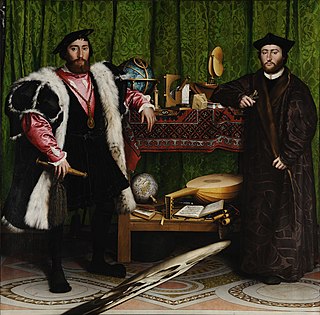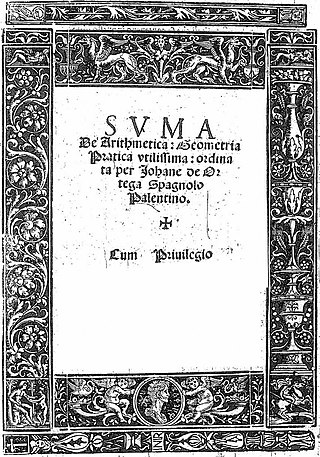Related Research Articles

Enrico Bombieri is an Italian mathematician, known for his work in analytic number theory, Diophantine geometry, complex analysis, and group theory. Bombieri is currently Professor Emeritus in the School of Mathematics at the Institute for Advanced Study in Princeton, New Jersey. Bombieri won the Fields Medal in 1974 for his contributions to large sieve mathematics, conceptualized by Linnick 1941, and its application to the distribution of prime numbers.

Hans Holbein the Younger was a German-Swiss painter and printmaker who worked in a Northern Renaissance style, and is considered one of the greatest portraitists of the 16th century. He also produced religious art, satire, and Reformation propaganda, and he made a significant contribution to the history of book design. He is called "the Younger" to distinguish him from his father Hans Holbein the Elder, an accomplished painter of the Late Gothic school.

Friedrich Ludwig Gottlob Frege was a German philosopher, logician, and mathematician. He was a mathematics professor at the University of Jena, and is understood by many to be the father of analytic philosophy, concentrating on the philosophy of language, logic, and mathematics. Though he was largely ignored during his lifetime, Giuseppe Peano (1858–1932), Bertrand Russell (1872–1970), and, to some extent, Ludwig Wittgenstein (1889–1951) introduced his work to later generations of philosophers. Frege is widely considered to be the greatest logician since Aristotle, and one of the most profound philosophers of mathematics ever.
This article contains information about the literary events and publications of 1617.

Leonard Nelson, sometimes spelt Leonhard, was a German mathematician, critical philosopher, and socialist. He was part of the neo-Friesian school of neo-Kantianism and a friend of the mathematician David Hilbert. He devised the Grelling–Nelson paradox in 1908 and the related idea of autological words with Kurt Grelling.
The year 1918 in science and technology involved some significant events, listed below.
The year 1841 in science and technology involved some significant events, listed below.
The year 1880 in science and technology included many events, some of which are listed here.
The year 1861 in science and technology involved some significant events, listed below.
The year 1703 in science and technology involved some significant events.
The year 1611 in science and technology involved some significant events.
The year 1525 in science and technology included many events, some of which are listed here.

Johannes Widmann was a German mathematician. The + and - symbols first appeared in print in his book Mercantile Arithmetic or Behende und hüpsche Rechenung auff allen Kauffmanschafft published in Leipzig in 1489 in reference to surpluses and deficits in business problems.

The Ambassadors is a 1533 painting by Hans Holbein the Younger.
The year 1500 AD in science and technology included many events, some of which are listed here.
The year 1541 in science and technology included a number of events, some of which are listed here.
Events from the year 1704 in France.
The year 1557 CE in science and technology included a number of events, some of which are listed here.
Events from the year 1717 in France

Juan de Ortega, was a Spanish mathematician. He wrote some of the earliest works on commercial arithmetic, and discovered an improved method for calculating square roots.
References
- ↑ Depicted in Holbein's painting The Ambassadors (1533) – "Arithmetic Book". Holbein's The Ambassadors and Renaissance Ideas of Knowledge. SUNY. Archived from the original on 23 July 2011. Retrieved 2011-08-08.